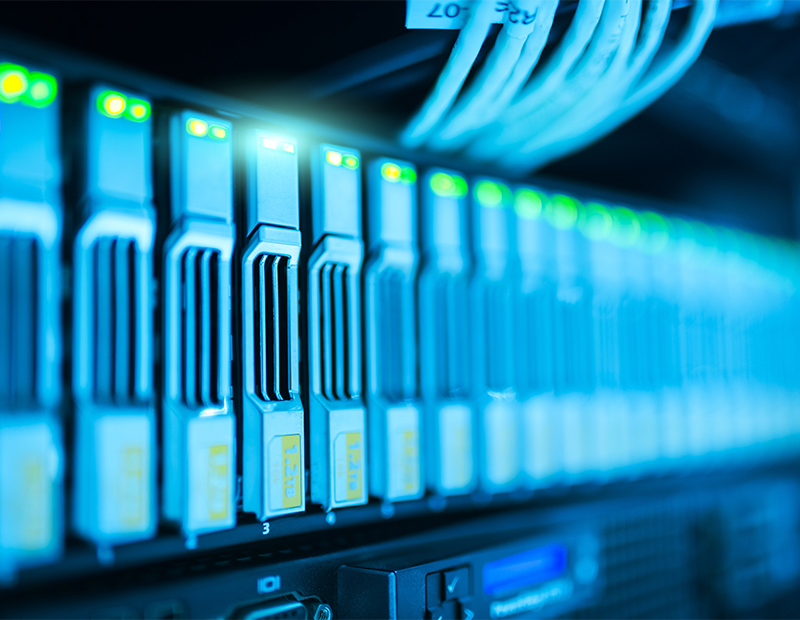What’s Ahead for Data Centers in 2021
In the last installment of our 2021 outlook series, Lee Kestler of Vantage Data Centers and Equinix’s Jon Lin take a deep dive into sector changes, challenges and upcoming trends.
Digitalization was well underway before the pandemic changed the way people live, interact and work. While the companies that embraced digital transformation had a head start, the remaining businesses had to adapt to a reality in which social distancing, work-from-home policies and nationwide lockdowns shaped business dynamics. Last year was challenging for data centers due to increased internet traffic, but the sector proved to be the backbone of a rapidly emerging, deeply digitalized economy.
Commercial Property Executive asked Lee Kestler, chief commercial officer at data center solutions provider Vantage Data Centers, and Jon Lin, president of the Americas at Equinix, to paint the digital picture of things to come for the sector.
READ ALSO: 2020 in Review: Data Centers
The pandemic acted as a catalyst for change. What shaped the data center market in 2020?
Kestler: The sector as a whole elevated to higher visibility as critical infrastructure in 2020. The pandemic catapulted the use of internet-based cloud computing, video conferencing, and mobile applications for education, telemedicine, food services and product deliveries. The increased focus of capital investment dollars for digital infrastructure validated the necessity to improve access to a vast array of online applications for businesses and consumers.
Lin: From the very beginning of the crisis, our top priority remained a focus on the health, safety and well-being of our colleagues, customers and communities. As critical infrastructure providers, the employees continue to work at our facilities, while the vast majority of our non-operations staff are working from home.
How have data center operations been affected by the pandemic?
Kestler: Supply chain challenges have definitely impacted the industry. However, a silver lining has emerged on the safety front. We quickly learned we could operate in more efficient/smaller teams to continue to build data centers and avoid dramatic delays.
Data center growth continues at a ferocious pace, so I don’t foresee any slowdowns. A hybrid work model is absolutely here to stay. Regardless of commercial offices or not, the use of mobile computing and cloud-based services will continue to be a prominent engine for commerce.
Lin: From the very beginning of the crisis, our top priority has remained a focus on the health, safety and well-being of our colleagues, customers and communities. As critical infrastructure providers, the employees continue to work at our facilities, while the vast majority of our non-operations staff are working from home.
Help our readers fill in the blanks. The road to recovery is paved with …
Kestler: Awareness and acceptance. Awareness that our new normal includes practical dependence on technology and acceptance that the use of technology is truly capable of making our lives easier as we traverse the road to recovery.
Lin: Digital transformation. Digital transformation will be a key factor for economic recovery as businesses adjust to operating online. In light of the pandemic, the importance of digital transformation is at the forefront of our customers’ minds as a key business priority across every sector. Customers who were further along in their digital transformations were able to adapt better to this new paradigm with employees working from home and customers consuming digitally. What markets are you targeting in 2021 and why?
What markets are you targeting in 2021 and why?
Kestler: Vantage continues to evaluate our North American and European markets. Future opportunities that meet customer demand will enable us to identify where we need to be and when we need to be there from a market perspective.
Lin: We plan to continue investing in our existing markets while also extending our global scale and reach. In 2020, we completed acquisitions to enter Mexico and significantly expanded our presence in Canada. In 2021, we expect to close our acquisition of two data centers from GPX to enter Mumbai, India, which will be Equinix’s foray into the country.
On the development front, we are investing where we see opportunities in the marketplace. We plan to continue to press our advantage in our major metros, which each generate over $100 million in annualized revenues. As of the third quarter of 2020, approximately 75 percent of our expansion cabinets are being built in those metros.
Tell us more about the challenges the data center sector will face in 2021.
Kestler: In 2021, industry challenges will be consistent with the past. The primary challenge is how quickly and efficiently operators can keep up with capacity demands as more and more applications integrate into our lifestyle.
As wireless networks proliferate, fiber backhaul networks must keep up with the volume to meet quality of service requirements for mobile applications which can be improved by edge computing deployments. However, in 2021, the primary compute transactions will still reside in large campuses near major network exchange points.
Lin: The data center sector is well-positioned in 2021 to be a beneficiary of accelerating digital demand trends. The challenge in 2021 will be building and operating data centers in a more sustainable fashion. Increasingly, customers are looking to partner with a responsible data center provider. What trends will define the data center sector in 2021?
What trends will define the data center sector in 2021?
Kestler: Trends to watch include the evolution of edge deployments in secondary locations beyond the primary network exchange points. The continued focus on environmental, social and governance criteria will gain steam as the technology industry has been forward-leaning to promote this throughout the supply chain. Lastly, the trend toward mobile payments and the cybersecurity concerns will hover as we expand the use of these tools and continue to enforce strict regulatory requirements for protection.
Lin: In 2020, the pandemic demonstrated the criticality of having digital infrastructure in place to support business operations. In 2021, digital transformation will remain a key trend as businesses navigate their own journeys in digitizing their legacy architecture. We also expect distributed infrastructure to persist as a trend as workloads need to be proximate to where data is being consumed.
Another trend continuation in 2021 will be deploying infrastructure at software-like speeds. In a cloud-first world, customers are used to deploying workloads rapidly.
Lastly, sustainability will likely be a key trend this year as data centers look to improve their environmental footprint. Across the sector, operators are evaluating their impact on the environment. Equinix is advancing a bold sustainability agenda with meaningful progress across the environmental, social and governance aspects of our business. We have made significant progress in our goal to use 100 percent clean and renewable energy, with more than 90 percent of our energy consumption covered by renewable sources in 2019.
READ ALSO: Industrial Real Estate 2021 Expectations
Any other key predictions for the sector in 2021?
Kestler: The data center industry will lead the inertia for sustainability and the use of renewables. While intermittent power is a challenge for data center operations, the development of sensors, software tools and network capabilities will be at the forefront of advancing the deployment of renewables across the globe. The modernization of the grid will be dependent on large power consumers being capable of operating in a less stable flow of electrons.
Lin: In 2020, COVID-19 expedited digital adoption in every business across every industry, accelerating years’ worth of digital transformation in mere months. As the trend of digital growth continues to evolve in 2021 and the years to come, data centers will play a critical role in helping businesses shape their digital infrastructure for success in the future.










You must be logged in to post a comment.